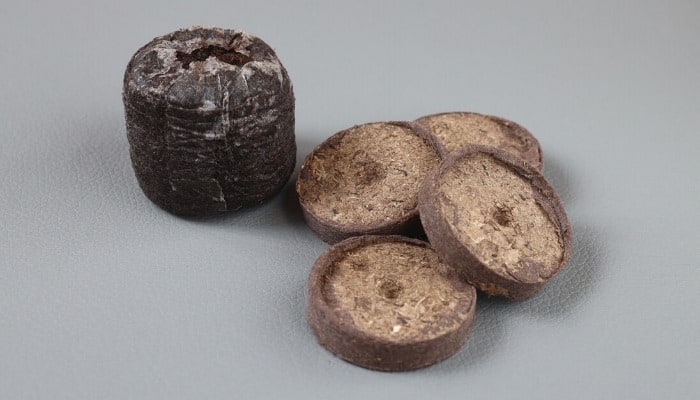Gardeners appreciate shortcuts that simplify the process of hydroponics. Therefore, peat pellets seem like the perfect solution in theory – they are compressed discs of sphagnum moss that expand when watered and are encased in biodegradable netting to maintain cleanliness.
But is this suited to hydroponics?
Can you use peat pellets for hydroponics? Peat pellets are not typically recommended for use in hydroponic gardening. This is because peat moss eventually breaks down, clogging the water pump and polluting the nutrient solution in the reservoir. Over time, mesh netting can also impact root development and overall seedling health.
Using peat pellets makes things unnecessarily difficult for hydroponic systems, but it can be done with a bit of planning and vigilance to prevent major headaches.
Here’s a brief look at the viability of peat pellets in hydroponics, plus possible alternatives.
Using Peat Pellets in Hydroponics
Hydroponic gardening relies on transporting nutrient solution via tubes and a pump to your plants, and peat pellets tend to disrupt this flow.
Why Peat Pellets Are Not the Best Choice for Hydroponics
The combo of peat moss and mesh material can cause maintenance headaches in a hydroponics system and create plant health issues before seedlings have even begun.
Clogging Risk
Peat breaks down over time, causing particles to accumulate and block the pipes.
Insufficient Support
Compared to seedling pots, peat pellets are not tall/sturdy enough to support growing plants.
Not Eco-Friendly
The mesh netting can take years to decompose, and mining peat moss emits a significant amount of carbon.
Root Limitations
Plant roots quickly outgrow the mesh, causing them to become entwined, which requires untangling/cleaning.
Ways To Use Peat Pellets in Hydroponics
Remove seedlings from pellets once they develop leaves – Once 4-6 leaves emerge, transport seedlings from pellets into alternative growing media so the roots can spread unencumbered.
Keep the peat pellets in net pots – YouTube gardener Old Planty observed that growing spinach in peat pellets inside plastic net pots (find them here) resulted in slower-developing roots, but the barrier of a pot ultimately protects a hydroponic setup from clogging.
Filter your pump & wash roots – If you plan on keeping your seedlings in the peat pellet, prevent pipe clogging by placing a filter over your pump intake (like a section of nylon stockings held in place with a rubber band) and routinely wash residual peat off the roots using pH-balanced water.
Better Hydroponic Growing Medium Alternatives
Rockwool cubes – Molten basaltic rock spun into fine fibers and wrapped in opaque foil. These keep their shape/integrity to prevent clogs while retaining adequate moisture.
Coco coir – Made from coconut husk fibers that promote excellent water retention while providing sufficient oxygenation and space for root development.
Expanded clay pebbles – Founder of Gardening Chores Adriano Bulla recommends them due to their “pH-neutral, porous honeycomb structure which retains nutrient solution.”
Related Questions:
Are Peat Pellets Soilless?
Peat pellets are made of compressed peat moss, a little fertilizer, and biodegradable mesh, making them a soilless medium.
Like any soilless starter mix, they are designed to help seeds germinate in a finer, cleaner medium, reducing the risk of soil-borne diseases.
How Long Can Seedlings Stay in Peat Pellets?
Seedlings should not remain in peat pellets any longer than they would in any seed starter medium (between 7-21 days).
Peat pellets dry out faster than conventional seed mix, so seedling should not remain in the pellets more than 4-5 days after displaying their first set of leaves.
Conclusion
Peat pellets can be used in hydroponics if you don’t mind regular root untangling/cleaning and pipe-filtering measures.
Peat pellets ultimately have more drawbacks than advantages (too short, messier, hinders roots etc.), so you’re probably better off using alternative growing media.

